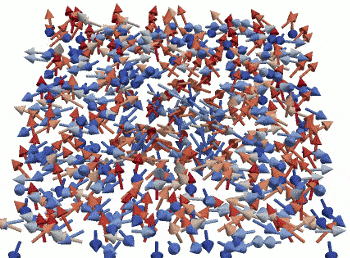Instructions on how to install the Anaconda Python distribution for complete beginners. These notes are provided primarily for students at the Max Planck Institute for the Structure and Dynamics of Matter, the University of Southampton, the University of Hamburg and other research institutes. These notes can help learners to install Python 3 on their own computers should they wish to do so, and to support their learning of programming, computing and data science, and subsequently their studies, in particular in engineering, computer science and natural sciences.
Jupyter for Computational Science and Data Science
A brief and subjective introduction to Jupyter notebooks, aiming to provide an overview of how Jupyter can be used in computational science and data science. Making reference to a some recent papers on the topic. Original post from 9 April 2021. Minor updates 30 November 2022.
Installation of Python, Spyder, Numpy, Sympy, Scipy, Pytest, Matplotlib via Anaconda (2021)
Instructions on how to install the Anaconda Python distribution for complete beginners. These notes are provided primarily for students at the University of Southampton and the University of Hamburg to help them install Python 3 on their own computers should they wish to do so, and to support their learning of programming, computing and data science, and subsequently their studies, in particular in engineering, computer science and natural sciences.
Zulip
What is Zulip, why would one use it, what differentiates it from IRC, Slack and friends? A short and biased summary.
Installation of Python, Spyder, Numpy, Sympy, Scipy, Pytest, Matplotlib via Anaconda (2019)
Instructions on how to install the Anaconda Python distribution for complete beginners. These notes are provided primarily for students at the University of Southampton and the University of Hamburg to help them install Python 3 on their own computers should they wish to do so, and to support their learning of programming, computing and data science, and subsequently their studies, in particular in engineering, computer science and natural sciences.
Spyder: The Scientific Python Development Environment
1 Spyder: The Scientific Python Development Environment
1.1 Introduction
Hans Fangohr (European XFEL & University of Southampton).
This blog entry has been integrated into Spyder as the Tutorial. Once Spyder has started, the most up-to-date version of this tutorial can be found under Help -> Spyder tutorial.
See the Spyder website …
Towards the European Open Science Cloud
Brief report from 2-day meeting on European Open Science Cloud, and subjective summary of current status (from the first European Open Science Cloud Stakeholder forum, 28 and 29 November 2017 in Brussels).

The European Open Science Cloud
The European Open Science Cloud (EOSC) is envisaged by the European Commission as …
Thermal stability and topological protection of skyrmions in nanotracks
Summary of our recent publication about energy barriers associated to the destruction/nucleation mechanisms of skyrmions in ferromagnetic nanotracks with interfacial DMI as published in Scientific Reports. Contains Docker container to reproduce results.
The Dvorak keyboard - what, why and "really?"
What is the Dvorak keyboard, why would one invent or even use it, and is it really worth doing? Link to pdf file with keys to print, links to background information and summary of experience using it.
Gamification of Python script execution in Minecraft
Use coding as a tool in Minecraft: with this mod you can carry and execute a Python script instead of a torch or axe. We are hoping we can extend this get Minecraft players interested in programming.
Reproducible science and standard problems – a case study
In this blog entry, I summarise the recent publication, which provides a fully reproducible standard problem. The associated open source code allows to re-compute and reproduce key figures in the paper by carrying out the required installation, simulation, post-processing and plot creation on the Travis CI service.
Introduction to OOMMF Python project
What is the OOMMF Python interface, and what are the benefits? A brief introduction to the Jupyter OOMMF project, and the first step of providing a Python interface for OOMMF. Also addressing: What is OOMMF.
Skyrmions in magnetic nanostructures
Summary of our recent Scientific Reports paper on stability, hysteretic behaviour, and reversal mechanism of skyrmionic textures in confined helimagnetic nanostructures.

Marijan Beg, Rebecca Carey, Weiwei Wang, David Cortes-Ortuno, Mark Vousden, Marc-Antonio Bisotti, Maximilian Albert, Dmitri Chernyshenko, Ondrej Hovorka, Robert L. Stamps, and Hans Fangohr
Ground state search, hysteretic behaviour …
Essential tools for computational science and engineering?
Summary of the simulation methods, software engineering approaches, programming languages and other key skills for computational science that are developed in the doctoral training programme in Next Generation Computational Modelling at the University of Southampton.
Driving magnetic skyrmions using microwaves
Summary of our recent paper on driving magnetic skyrmions with microwave fields
Weiwei Wang, Marijan Beg, Bin Zhang, Wolfgang Kuch, and Hans Fangohr
Driving magnetic skyrmions with microwave fields
Physical Review B 92, 020403(R) (2015)
(Online: journal arXiv.org)
Context: Magnetic skyrmions
A very brief introduction to magnetic skyrmions …